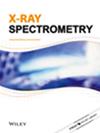使用扫描电子显微镜-能量色散光谱对胆固醇和色素胆结石进行元素研究和制图
IF 1.5
4区 物理与天体物理
Q3 SPECTROSCOPY
引用次数: 0
摘要
摘要胆结石是人类最严重的疾病之一,世界范围内胆结石组成存在地区差异。胆囊内胆结石的形成是一个复杂的过程,尽管在仪器方面取得了进展,但仍存在争议。本研究利用傅里叶变换红外光谱(FTIR)和扫描电子显微镜-能量色散X射线光谱(SEM-EDS)对胆固醇和色素型胆结石的化学、结构和元素组成进行了深入分析。热重法和差示扫描量热法(TG - DSC)也对胆结石进行了分析,以预测其热行为。采用FTIR光谱法对胆固醇结石和色素结石进行鉴别。利用扫描电镜对胆结石进行了形态学研究,并用能谱分析了胆结石内元素的分布。对胆固醇和黑色色素胆结石的主要和次要元素进行了元素成像和测绘,揭示了结石的异质性。研究发现,色素结石中重金属和有毒元素的含量高于胆固醇结石。TG - DSC的结果与FTIR的结果具有良好的相关性。本文章由计算机程序翻译,如有差异,请以英文原文为准。
Elemental studies and mapping of cholesterol and pigment gallstones using scanning electron microscopy–energy dispersive spectroscopy
Abstract Gallstone formation is one of the most severe human diseases, with regional differences in gallstone composition worldwide. The formation of gallstones inside the gallbladder is a complex process and is still under debate despite advances in instrumentation. This study was an in‐depth analysis of the chemical, structural, and elemental composition of cholesterol and pigment‐type gallstones using Fourier transform infrared (FTIR) spectroscopy and scanning electron microscopy–energy dispersive X‐ray spectroscopy (SEM–EDS). Thermal gravimetric and differential scanning calorimetry (TG‐DSC) analysis was also carried out on gallstones to predict their thermal behavior. FTIR spectroscopy was employed to distinguish the cholesterol and pigment gallstones. Using SEM, we performed the morphological studies of gallstone and EDS were carried out to analyze elemental distribution within the gallstones. Elemental imaging and mapping of the major and minor elements within the cholesterol and black pigment gallstones were carried out, revealing the stone's heterogeneous nature. The level of heavy and toxic elements was found to be higher in pigment stones than in cholesterol gallstones. The results obtained from TG‐DSC are well correlated and supported by the results from FTIR spectroscopy.
求助全文
通过发布文献求助,成功后即可免费获取论文全文。
去求助
来源期刊

X-Ray Spectrometry
物理-光谱学
CiteScore
3.10
自引率
8.30%
发文量
38
审稿时长
6-12 weeks
期刊介绍:
X-Ray Spectrometry is devoted to the rapid publication of papers dealing with the theory and application of x-ray spectrometry using electron, x-ray photon, proton, γ and γ-x sources.
Covering advances in techniques, methods and equipment, this established journal provides the ideal platform for the discussion of more sophisticated X-ray analytical methods.
Both wavelength and energy dispersion systems are covered together with a range of data handling methods, from the most simple to very sophisticated software programs. Papers dealing with the application of x-ray spectrometric methods for structural analysis are also featured as well as applications papers covering a wide range of areas such as environmental analysis and monitoring, art and archaelogical studies, mineralogy, forensics, geology, surface science and materials analysis, biomedical and pharmaceutical applications.
 求助内容:
求助内容: 应助结果提醒方式:
应助结果提醒方式:


